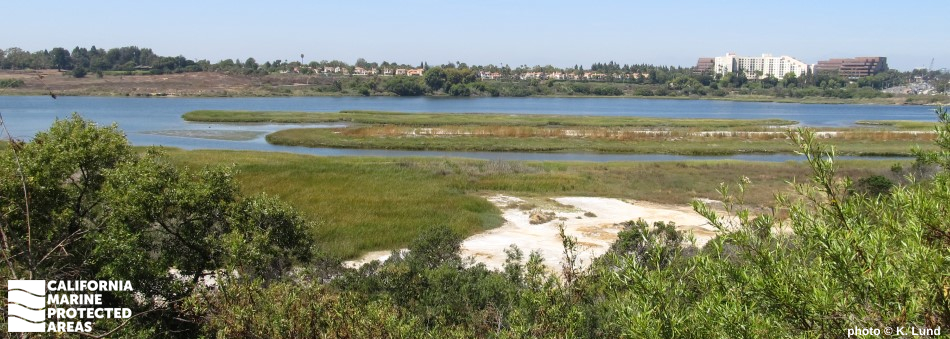
Overview
Upper Newport Bay State Marine Conservation Area (SMCA) protects a little more than one square mile of upland lagoon habitat including tidal flats and coastal marsh. A plethora of small mammals, fish, crustaceans, worms, clams, and birds, including the endangered Ridgway's rail and the California least tern, can be found within the marine protected area's (MPA's) wetlands.
Since 1975, Upper Newport Bay has been designated as a nature preserve. It is one of the largest of only a few remaining natural estuarine ecosystems in Southern California. The wetlands offer a popular recreation area for riding bikes and horses, hiking, kayaking, birdwatching, and simply enjoying the tranquil waters hidden within a bustling city.
Regulations
It is unlawful to injure, damage, take, or possess any living, geological, or cultural marine resource, EXCEPT:
Recreational take of finfish by hook-and-line from shore only is allowed. Shoreline access limited to established trails, paths, or other designated areas. Restrictions exist for boating and swimming. See CCR T14 §632(b) for details.
California Code of Regulations Title 14, Section 632(b)(132)(opens in new tab)
Quick Facts
MPA size: 1.24 square miles
Habitat composition*:
- Estuary: 1.20 square miles
- Coastal marsh: 3.71 square miles
*Habitat calculations are based on three-dimensional area and may exceed the total MPA area listed above.